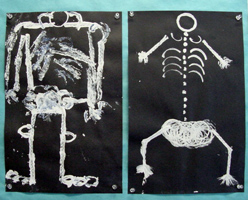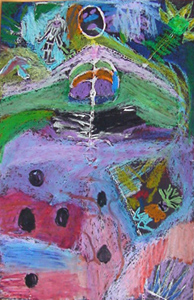Although we may look different on the outside, on the inside we all have the same skeletal structure. The challenge of creating a skeleton causes students to take a close look at the anatomy of the human body, the relationship of one body part to another, and at the many joints throughout our bodies that allow us to move. This anatomy exploration works best when it is integrated with a science unit on the systems of the human body.

Max (age 8) drew this picture at home. He was inspired by a photo of a skeleton that he saw in a book.




















